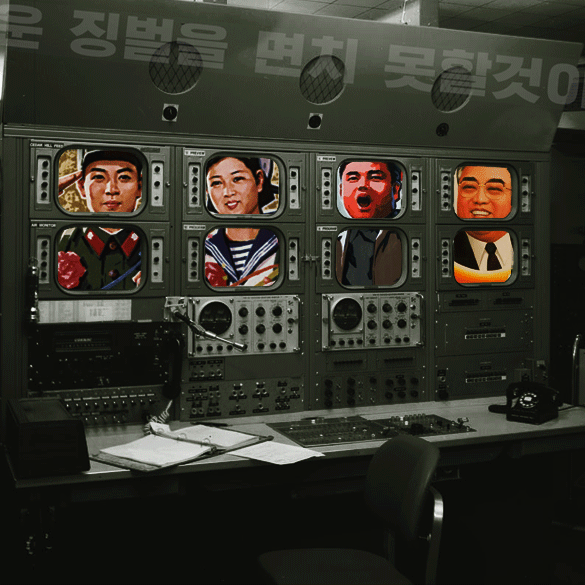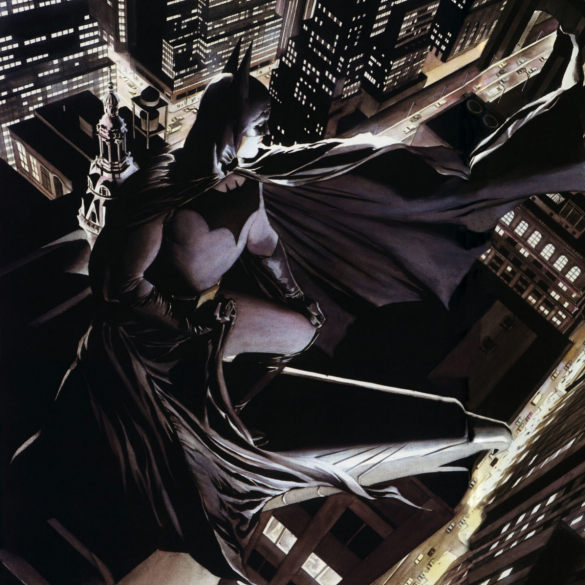According to the new remake of Red Dawn the communist threat is back. At the peak of The Cold War the original Red Dawn, released in 1984 and starring soon to be megastars Patrick Swayze and Charlie Sheen, showed a rag-tag army of teenagers take on the might of the invading Soviet Red Army. The new Red Dawn follows the same narrative; except this time around the invading force is North Korea, the isolated communist state. Whereas in the mid-eighties the prospect of a Russian-led assault on American soil was reasonable to imagine, North Korea poses no similar threat. At present the country is in economic turmoil, and led by the incredibly young and untested Kim Jong-Un with a squabbling gang of military elders. North Korea’s army, although numbering over a million troops, is undernourished by years of cripplingly bad crop harvests whilst its antiquated military equipment harks back to the once glorious days of the 1980’s when the Soviet Union was its key sponsor and provider. As much as North Korea postures about its place in the world and flaunts its nuclear program, it also pouts and whimpers over its hardships, and is in constant need of aid and economic assistance from China, its only real ally. Unlike in the eighties, where American government administrations and Hollywood painted the Russians as the clear-cut bad guys, today the enemy is less clear. The War on Terror has meant that instead of being at war with a nation, America and its allies are engaged in an unpopular war with an ideal, and ideals are notoriously difficult to portray as deadly or malevolent on film. Thus, Hollywood has returned to the Red Threat.
An Asian is an Asian and a Communist is a Communist
Red Dawn was kept out of movie theatres for a number of years due to some post production tweaks. The original invading army in the film was communist China. The studio MGM reconsidered this move when they thought that communist China would censor the film and lock it out of the lucrative Chinese film market. With some clever edits and CGI the foes of Red Dawn were changed to communist North Koreans without any re-casting of the antagonist roles; after all, in Hollywood, what is the difference, right? It would seem, in re-making Red Dawn, Hollywood has exposed a casual racism and relative unease around foreigners; that it can change a few flags, touch up some dialogue, and suddenly they have a different, yet still deadly communist enemy marching through its film. Interestingly this same scenario was played out a year before Red Dawn was released in the video game Homefront (2011). In an imaginative prologue, written by Apocalypse Now and original Red Dawn screenwriter John Milius, a unified Korea has become a major global power under the leadership of Kim Jong-Un, the son of Kim Jong-Il. The demise of American empire and an Asian Bird Flu epidemic has left the United States extremely vulnerable. The Koreans launch an attack which leads to the occupation of much of the US Pacific Coast, thus the fight to re-take America begins. The original enemy in Homefront was intended to be Chinese, until game developers thought better of it. In an article entitled China Is Both Too Scary and Not Scary Enough To Be Video Game Villains, games publisher Danny Billson from THQ commented “China is like America’s factory. Everything you buy is made in China.” (Totilo 2011). This comment is right, if slightly narrow in perspective. China is often regarded as the world’s factory, not just America’s. The title of the article perhaps tells us more about America’s tepid relationship with China. The prospect of an invasion by Chinese forces would hardly seem likely in the current globalised environment, yet the fear that should it happen America would be almost powerless to withstand it, judging by the economic and militaristic might of China and its ever growing global support network. China’s merging of traditional communism and modern free market capitalism has boosted the country’s economic growth beyond any speculators wildest dreams, rigorously catching up with America. China no longer has any legitimacy as a communist threat due to its embrace of capitalism; essentially, its reliance on production is just as important as the world’s reliance on its produce. China is too scary a prospect to antagonise, yet its seemingly undeviating place in the world fosters a sense of the ordinary which makes it not scary enough.
The Fictional State
It is perhaps easy for Hollywood to portray North Korea as a fictional enemy when so much of North Korea’s actual history and culture has been fictionalised by its very own leadership. Kim Jong-Un, the young and portly current leader is the third in a dynastic line of Kims to lead the country under the ideology of Juche (loosely translated to mean self-reliance), and to maintain a hard-line and xenophobic attitude to other countries and other ideologies. His father, the late Kim Jong-Il, was perhaps the most prolific author of much of North Korea’s recent fictional history. His own father Kim Il-Sung led the country out of the Korean War and into its first decades of early prosperity and it was Kim Il-Sung who adapted Stalinist and Confucian thinking to his own Juche ideology. It was the son Kim Jong-Il who propelled the cult of personality that surrounded them both into the homes and lives of the North Korean people, via the strong use of social-realist propaganda and state owned media, which pumps anti-western sentiment to the masses and proposes that the country needs nothing and has nothing to envy of the rest of the world. In the book The Cleanest Race (2010) by B.R. Myers, the propaganda and deeply xenophobic outlook of the North Koreans is explored to great depth. The Christ-like graphic depictions (not photographs) showing Kim Il-Sung or Kim Jong-Il dispensing on the shot advice to the Korean workers, or embracing their comrades are to demonstrate a leadership that is, and has always been, concerned in its citizens welfare. The Kim dynasty has developed this propaganda to fool its own people into believing this fictional history. It is perhaps not surprising that Kim Jong-Il was an author of many books on the artistic and political development of film and literature. Known to write and direct both films and operas in his early years, Kim Jong-Il would have been suited and even perhaps would have preferred an artistic life. Instead public duties called when he was named heir apparent to his father in the mid 1970’s. His new role and ever increasing responsibilities did not impede on him dictating his theories of cinema and literature. His books On the Art of Cinema and On the Art of Opera feature doctrine on story and characters, narrative and exposition. These books, combined with numerous other works, create an internal machine that peddles North Korea’s alternative narrative and its dogmatic socialist view to its own citizens, and in effect, lays the foundation for a fictional state that its author has implemented not in film, but in the everyday. Whole sections of On the Art of Cinema are devoted to laying waste to Hollywood style filmmaking:
In the capitalist system of film-making the director is called “director”, but, in fact, the right of supervision and control over film production is entirely in the hands of the tycoons of the film-making industry who have the money, whereas the directors are nothing but their agents. (Kim 1987)
A valid point, especially when you take into account the changes made to Red Dawn. In a way, North Korea resembles a cinematic caricature of a communist state, dreamt up by Hollywood to be the industry standard for corruption and evil, a point that is lampooned with hysterical results in Team America: World Police (2004). The tragedy is that North Korea is very real, and its corruption of its own citizens is even more a terrible reality.
Happy to be bad
One cannot help but think that every time North Korea is pushed into the antagonist’s role its leadership rejoices. The country’s leadership has been trying for decades to portray itself to the outside world as a formidable beast that retains unaccountability for its actions, Hollywood is perhaps better equipped for the job than the leadership of North Korea. The country’s nuclear program is a subject of much speculation, with some believing it to be a real threat, whilst others regard it as a blackmail tool to obtain more aid assistance. Either way, it has worked. America is in a constant game of cat and mouse as it tries to broker deals with the regime to break off its nuclear program and participate in diplomacy, which it does for a while until it feels it’s losing face, and then reinstates the program and takes antagonistic action like the recent rocket launch and shelling of a disputed South Korean island. These actions raise opposition voices from most of the world’s nations, but very little action has been taken apart from economic sanctions, which ultimately punish the people of North Korea more than the leadership. The reality is that the North Korean leadership is not the formidable beast it wishes to be, but a whimpering wounded animal left to wander in the wastelands of the Cold War, still snapping and bearing its teeth at anything that comes too close, but should the need arise, easy to slay from afar. In the future we will no doubt see North Korea return to the antagonist role in popular culture; the country, simply put, is too weird and too scary to ignore.




One thought on “North Korea in Fiction and as Fiction”